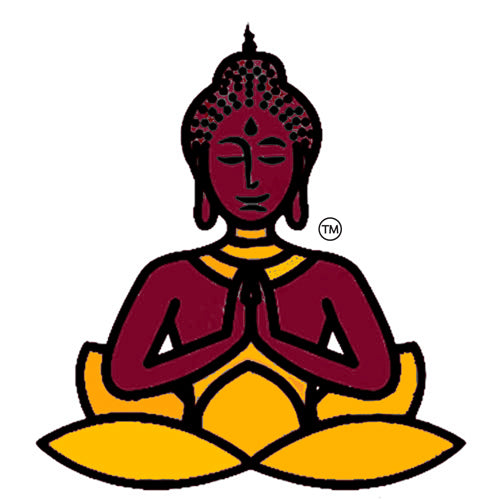What is a Toran ?
Share
The word Toran originates from the Sanskrit word ‘Torana’ which means to pass. Toran is the name of a sacred gateway in Buddhist architecture. The original Toran is a typical form of a projecting cross-piece that rests on two uprights. It is made of wood or stone. The projecting cross-piece is generally of three bars that are placed one above the other. Both the cross-piece and the uprights are usually beautifully sculptured.
Though nowadays we have different types of Torans but before these beautifully designed Torans of today were created, there was a range of natural Toran's that were used. You would often witness mango leaves used in Southern India, while marigold flowers used in Northern India as part of the Torans.
The earliest archaeological evidence of Torana dates back to the time when Sanchi stupa was built by the Mauryan Empire in the 3rd century BCE. The Sanchi Torana is the imitation of brick and timber construction in stone and is considered to be one of the first Buddhist architectural torans in India.
Even in Kalinga architecture, we witness the Toran in many temples like Jagannath Temple, Mukteswar Temple and Rajarani Temple. Toran also finds reference in Buddhist writings, where it is considered the sacred entrance or gateway.
During the ancient times, Torans or bandhanwars were tied on the doors of the home and temples to please and attract the divine energy of Goddess Lakshmi. In earlier times, Torans were made of marigold flowers and mango leaves. These mango leaves were expected to absorb the polluted air from the outside and only let fresh air inside the house. Similarly, the green colour of the mango leaves was expected to ward off any negative energies from the house and give a sense of calm and relief. In the same way, the marigold flowers' orange colour is expected to keep away any evil eyes, and the scent of the flowers ward off insects. These torans are the first thing that welcomes the guests as soon as they step inside your place. They are not only meant for decoration purposes, but they also give out friendly vibes to the people visiting your home.
The entrance to a household is significance in the Indian culture. It’s a gateway towards the pure interiors of the house away from the polluted world. There are various architectural dos and don'ts based on the beliefs for a long time. For example, it's believed that a property should never face the South West as it brings bad luck, misfortunes and struggles. It is also recommended to have a statue or a picture of Lord Ganesha at the entrance of a home. Adding on to the list, it is said to have an equal number of doors and windows in your property. These beliefs and recommendations are from the traditional Hindu system of architecture known as Vastu.
The various colours of the decorative torans hold significance. These include orange, yellow, green, white, red, blue and purple.
Orange Toran: This colour holds significant importance in all the holy gatherings in Hinduism. You can even witness priests wearing this colour as it signifies purity. This colour symbolises generosity and therefore, hanging a bandhanwar of this colour at your door will reflect purity and good vibes in your house.
Yellow Toran: The yellow colour signifies growth, concentration and harmony. Knowledge and wisdom are also associated with yellow colour. The yellow colour also represents the vibrancy of the spring season. Therefore, having a bandhanwar of this colour at your door will reflect peace and vibrancy in your house.
Green Toran: The green colour reflects happiness, calmness and peace. This colour stabilizes the mind and calms the emotional imbalances of an individual. It represents the mother nature and thus, calms the mind and soul. Therefore, the green colour would be a vital choice to have while choosing a Toran colour for your house.
Red Toran: Red colour is a symbol of power. It is one of the most auspicious and significant colours in the Hindu Dharma. During any special occasion, this colour is worn. Therefore, you can even choose a red colour Toran for hanging at the door of your house.
White Toran: White colour signifies calmness, purity, cleanliness, and peace. What's better than a white colour as it is the mixture of all the basic seven colours. Therefore, using a white colour Toran would be a fantastic fit for placing at the door of your house.
Blue Toran: The colour blue, is associated with Lord Krishna, perhaps one of the most favoured gods in India.
Pink/Purple Toran: Pink in India symbolizes youth, fun, romance, and excitement. Pink is considered a sensual and passionate colour. While the colour purple in Indian culture is a colour of comfort.
Toran is also a traditional hanging seen in Indian households during festive occasions, like Diwali. It fits perfectly into the archways of doors and at the entrance of homes, and the flowers and beads are hung on the doorways, pathways, and windows. It gives the festive mood enhancement and also adds to the decor of the house.
Nowadays you need not just hang decorative torans on entrances and front doors, you can hang them anywhere in the house; on the windows and doors of any interior room, garden rooms or your summerhouse to add some good vibes and extra style to your home.
Source: Tradition of Toran – The Fascinating Facts and Significance of Toran
